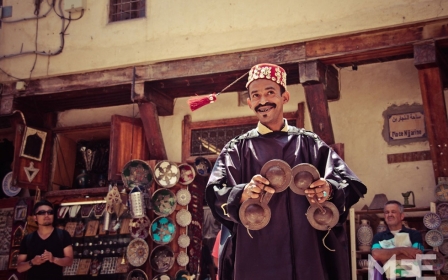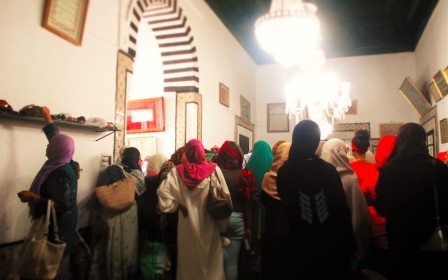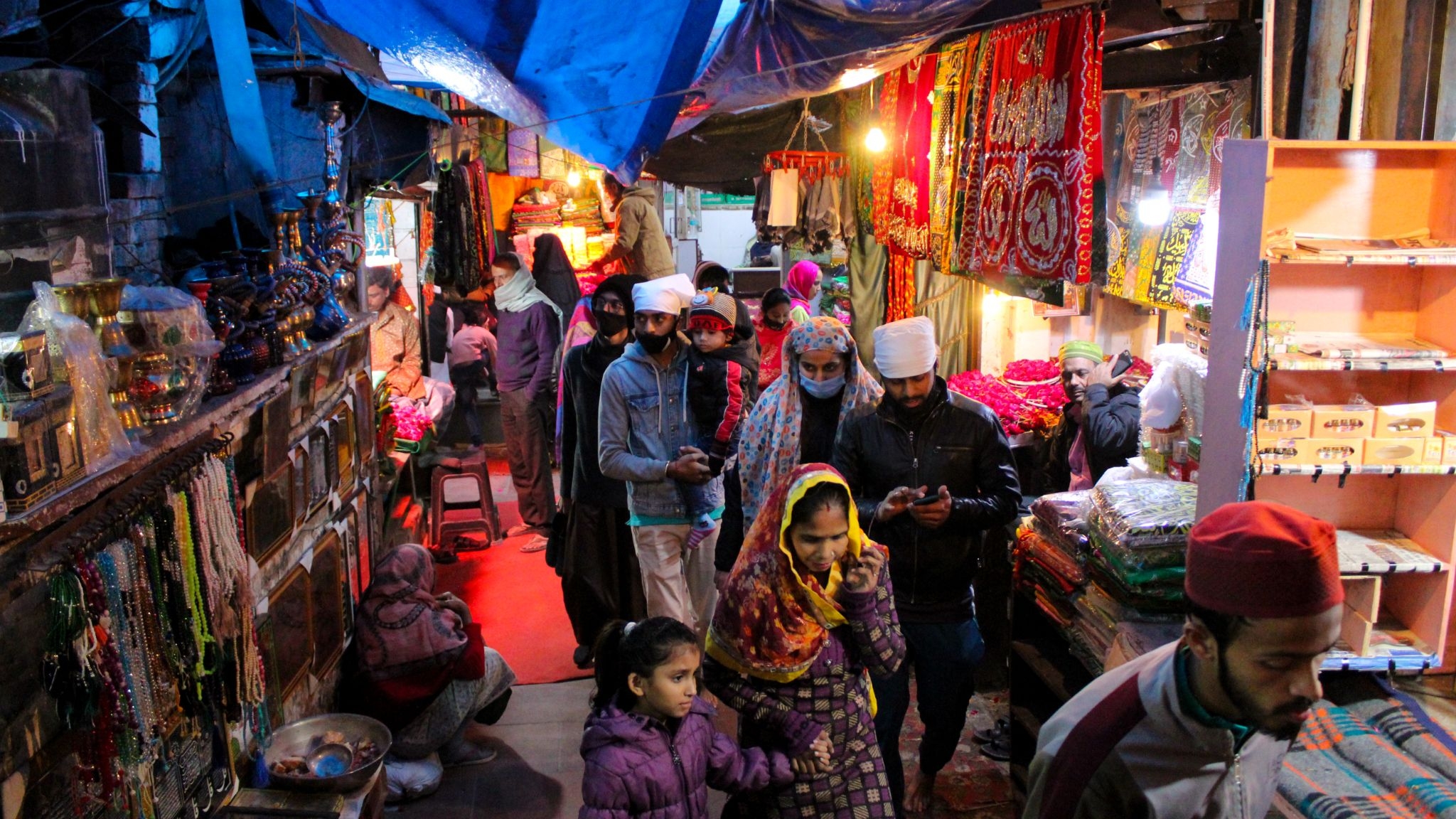
In pictures: India's Sufi Qawwali traditions
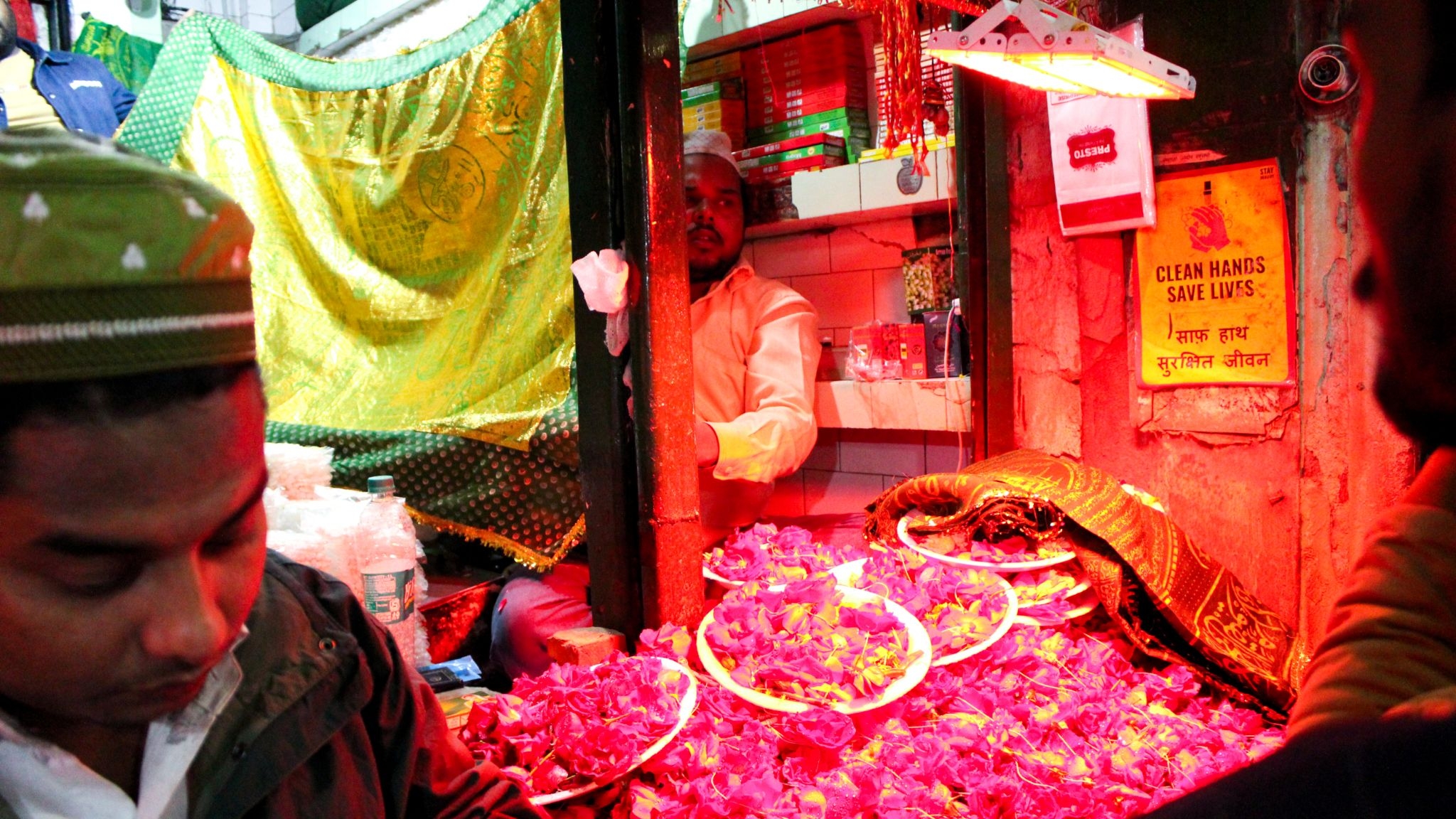
Every evening in the Indian capital of New Delhi, devotees gather at the shrines of the Sufi saints Nizamuddin Auliya and his student Amir Khusrau. Visits to the shrine are particularly common on Thursday evening, which marks the start of the Muslim day of religious gathering called Jumma (Friday). Rituals at the adjoining shrines (known as dargahs) include recitations of the Quran, Sufi chants, known as dhikr, and the performance of Qawwali, a devotional style of music initiated by Khusrau. The word Qawwali comes from the Arabic qawl, meaning "utterance".
In the picture above, a street vendor sells agarwood incense and rose petals for use in devotions inside the dargahs. (All pictures by Shahinda Syed)

Auliya was a Sufi mystic born to a noble family, which claimed descent from the Prophet Muhammad, and his disciple Khusrau was born to a Turkic father and Indian mother. The pair lived in the 13th and 14th centuries during the Delhi Sultanate-period; these were a series of successive Muslim dynasties of Turkic, Afghan and Arab descent, which ruled over much of what is now India, Pakistan and Bangladesh. While Indian dialects related to modern Hindi were widely spoken, the official language during the period was Persian and Khusrau composed most of his poetry in that language.
In the picture above, a devotee ties threads to the wooden perimeter of Khusrau's tomb. Each thread represents a wish and is usually accompanied with a mannat (vow) to perform certain good deeds, such as feeding the poor, in order to have the wish fulfilled. Such practices are common among the Sufis of South Asia but are considered innovations by more conservative interpretations of Islam.
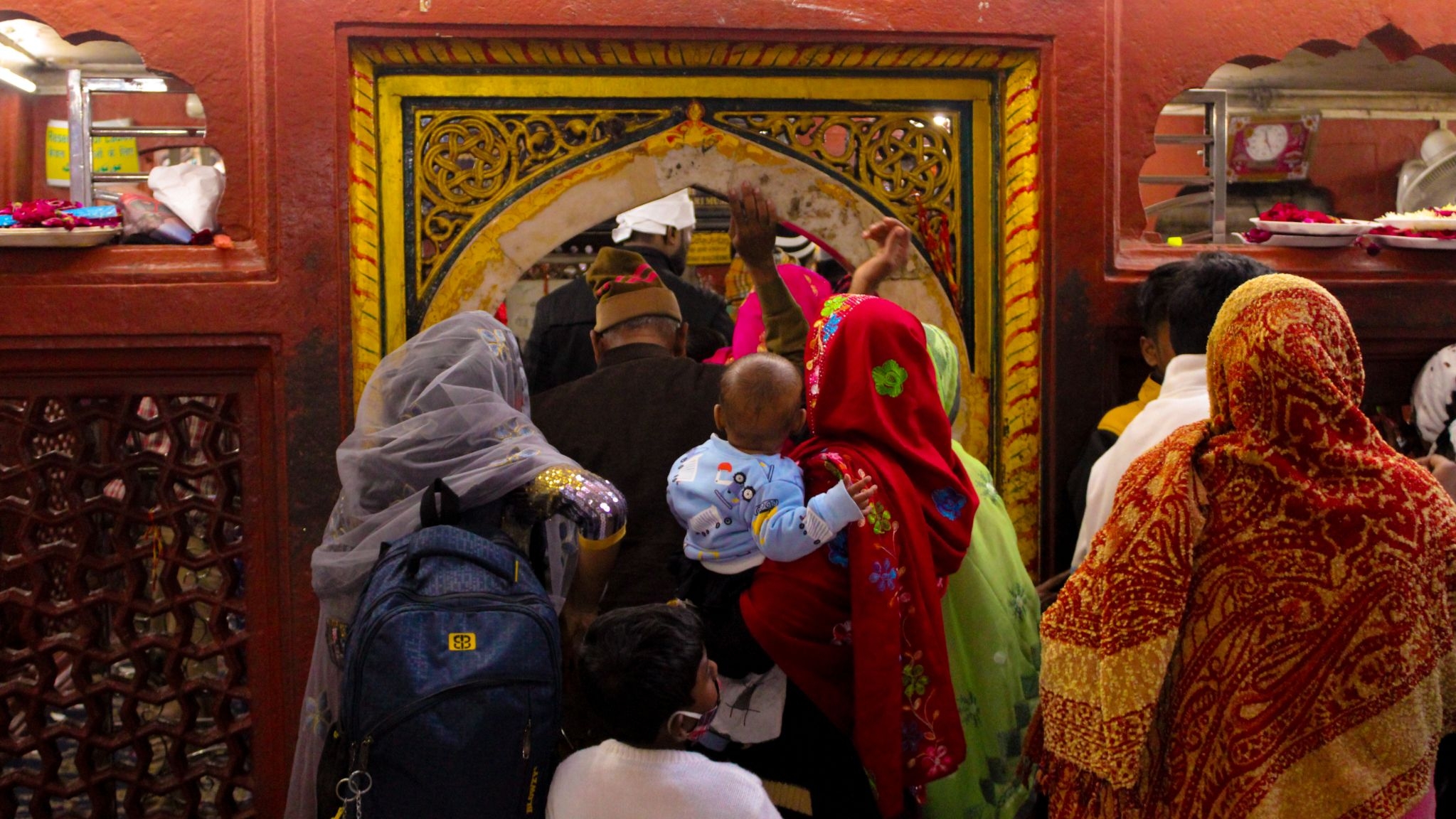
Khusrau is widely credited with establishing the Qawwali traditions, which combine Turkic, Persian, Arab and native Indian styles of music and poetry. Initially the use of instruments was prohibited so the form relied heavily on the strength of a performer's voice. However, over time more instruments were included in the style. Perhaps the most famous Qawwali performer of all time was the late Pakistani maestro Nusrat Fateh Ali Khan, who is often referred to with the honorific Ustaadh, meaning "master" or "teacher".
The picture above shows the entrance to Khusrau's masoleum. It is traditional to visit Khusrau's grave before visiting Auliya's.
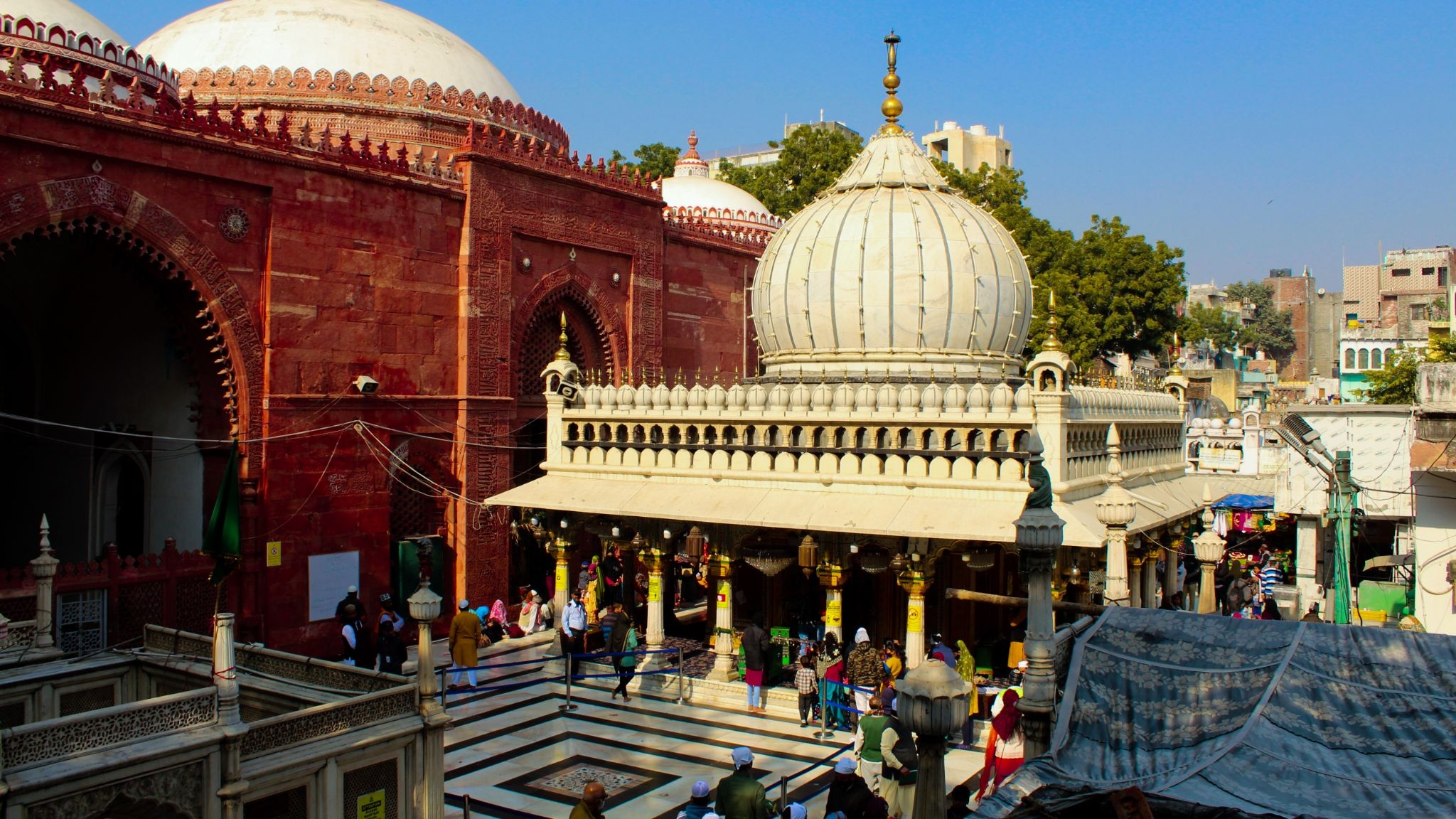
The white domed structure next to the red brick mosque is the tomb of Nizamuddin Auliya with Khusrau's resting place positioned right next to it. Khusrau's poetry includes religious devotions, odes to Delhi's sultans and to historic personalities, such as Alexander the Great. He is best known for verses dedicated to his teacher Auliya. So great was his dedication to his student that Auliya is quoted as saying: "If the Shariah allowed me, I would have liked him to be buried with me in the same grave."
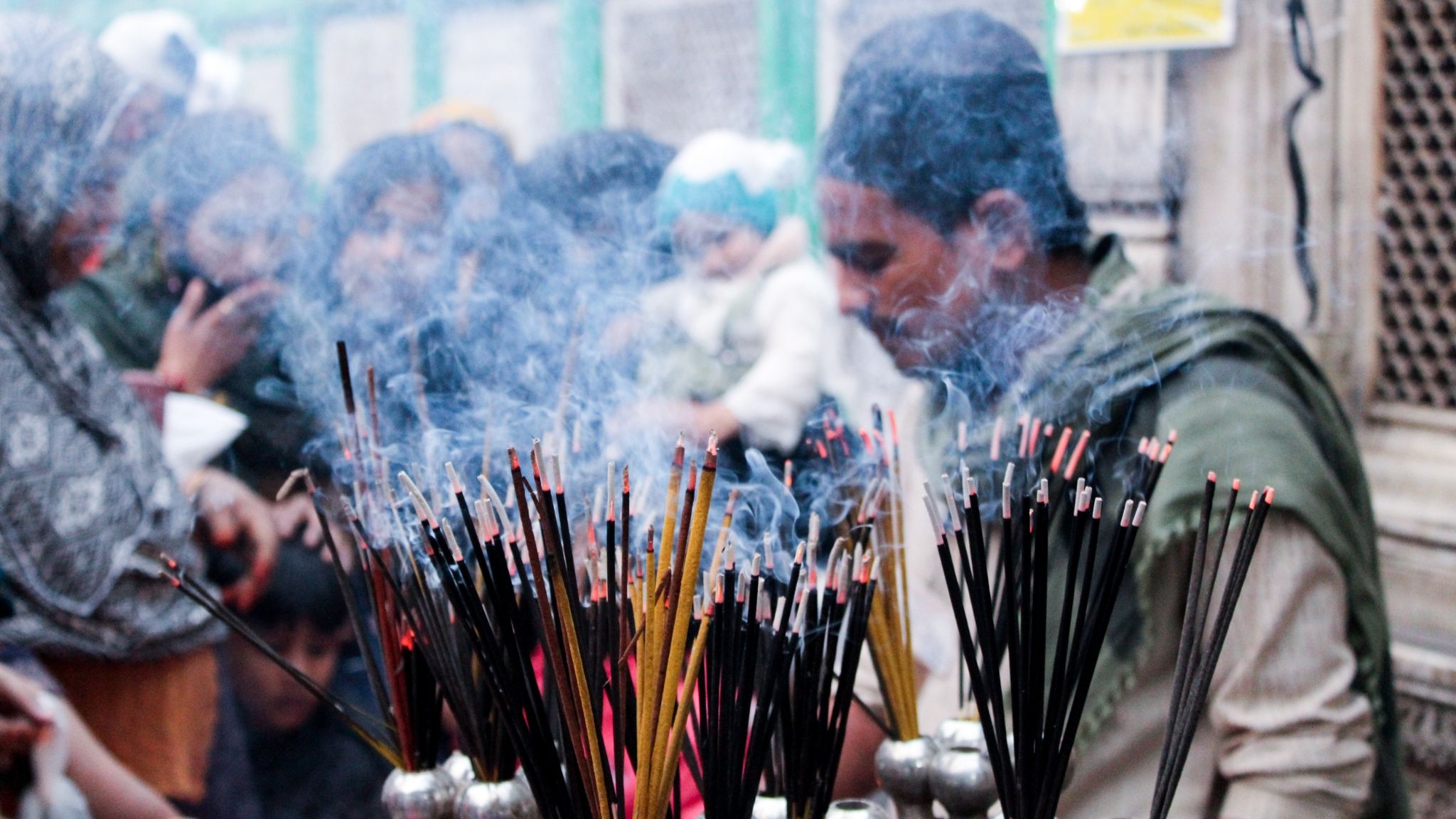
A large proportion of India's 200 million Muslims are influenced by the Sufi tradition and the likes of Auliya and Khusrau are venerated across the subcontinent, with devotees visiting their tombs from across the region. The burning of incense is a practice common at tombs and graveyards across the region and is done to purify a site and ward off bad spirits.
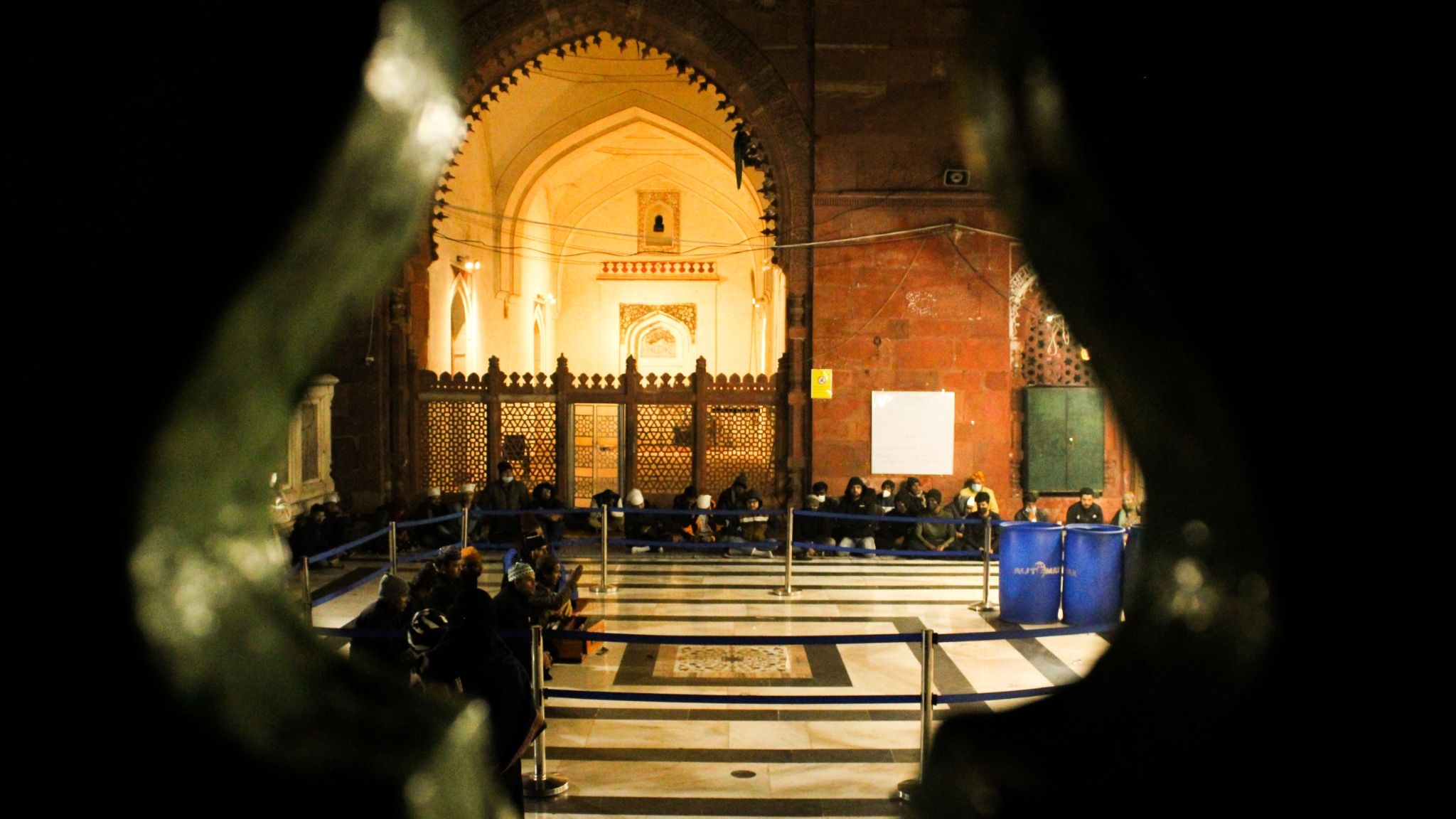
In its religious forms, Qawwali aims to induce a trance-like state within the listener. The melody usually builds up slowly, increasing in intensity until it reaches a crescendo. Renowned modern day performers include the late Nusrat Fateh Ali Khan, his son Rahat and the Sabri brothers. While female performers were traditionally discouraged, today artists like Abida Parveen incorporate Qawwali styles into their music.

Qawwals (Qawwali singers) are seen here using instruments such as the harmonium and dholak, a wooden hand drum, in their performance. Other percussion instruments, such as the daf and tabla are also widely incorporated into performances.
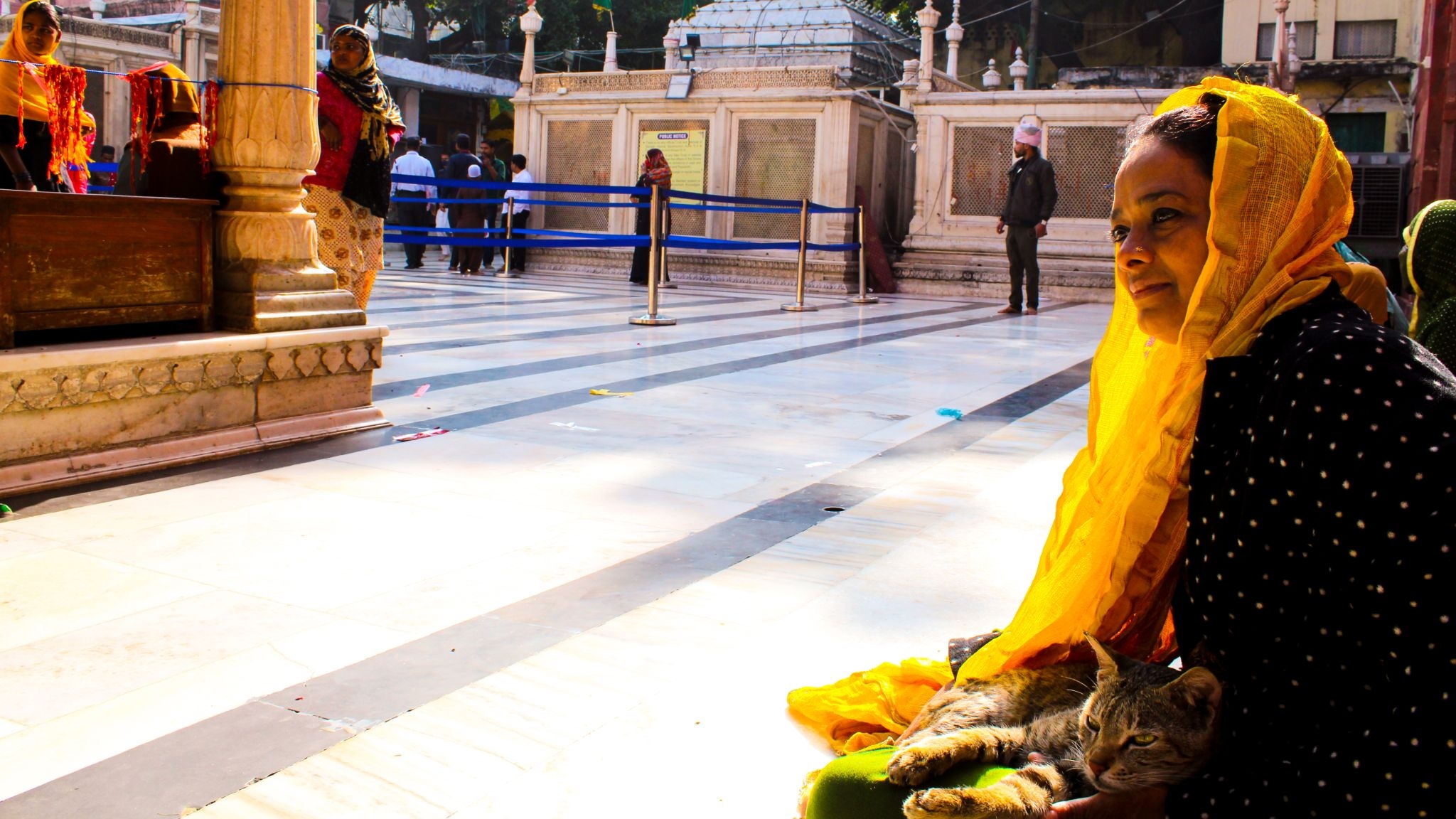
A woman pets a cat at the darghah complex in New Delhi. Visits to shrines in India are often family occasions but once inside, the genders are usually segregated. The dargahs serve an important social function for many Indian Muslims as they are visited for blessings before major milestones in a devotee's life, such as before school examinations, marriages and the birth of a child. Many also serve meals to the poor and other visitors.
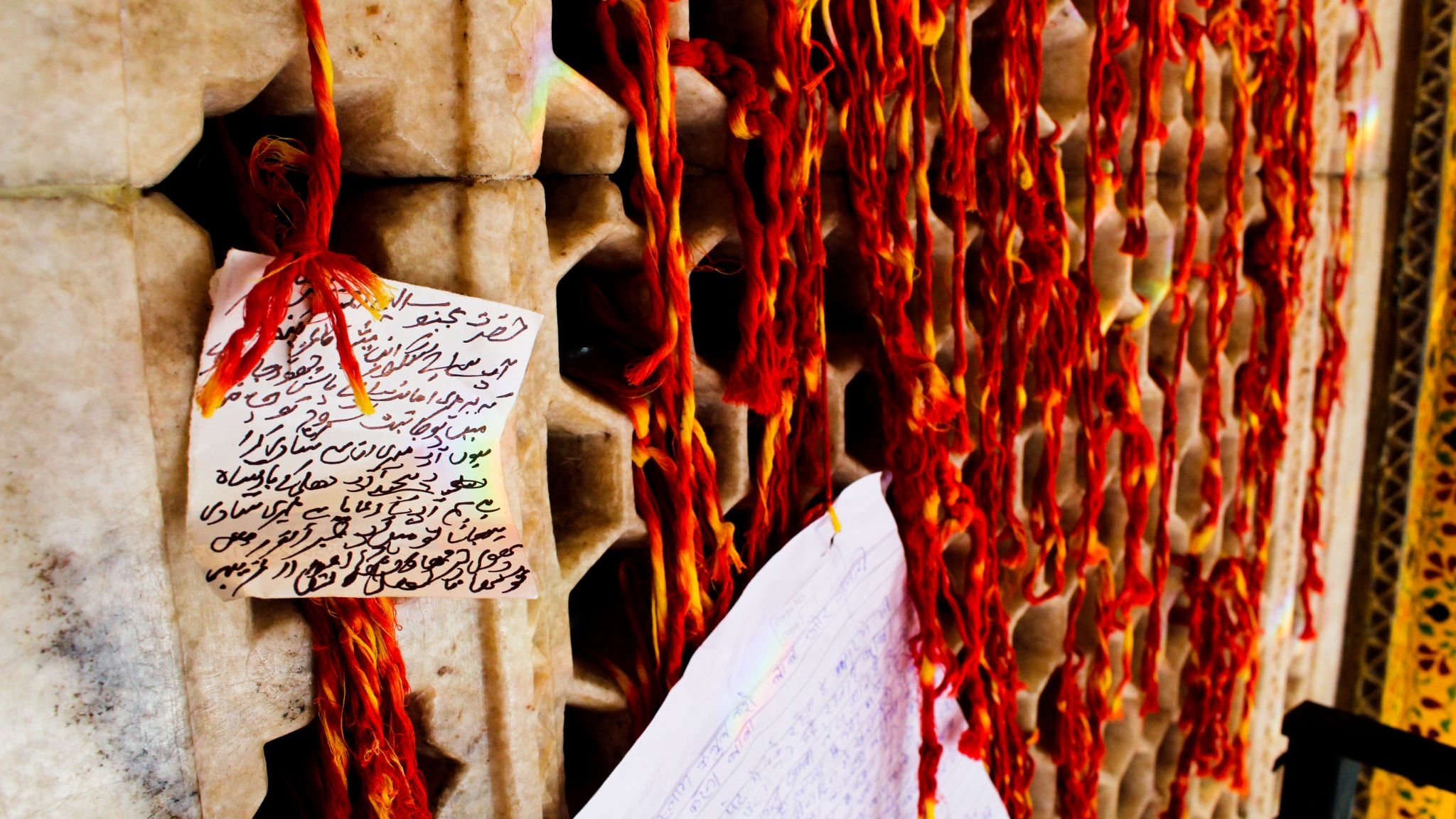
South Asian poets like Khusrau, who spoke both Persian and Indian dialects, helped give rise to the Urdu language, which combined Hindavi grammar with a vocabulary derived from Persian, Chagatai Turkic and Arabic.
Auliya died in 1325 and upon hearing of his mentor's death, Khusrau is reported to have uttered the lines: "Let us, oh Khusrau return home now/ the dark dusk settles in the four corners of the world." Within months Khusrau had also died.
Middle East Eye delivers independent and unrivalled coverage and analysis of the Middle East, North Africa and beyond. To learn more about republishing this content and the associated fees, please fill out this form. More about MEE can be found here.



